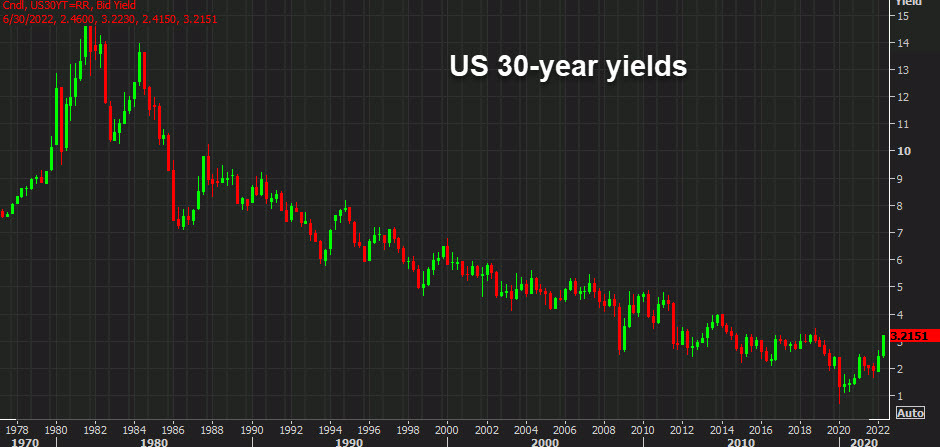Why are rates always stuck near the lower bound?
The usual explanation is that globalization, automation and demographics are the culprit. That’s compelling but the BIS has a paper that puts forth a novel alternative, or at least a contributing factor.
I’ll let CIBC describe what it says:
“The paper’s broader
point is that financial markets get accustomed to low interest
rates, and economic actors take on leverage or build up asset
valuations in a way that makes for financial booms in the low
rate environment, and feeds into financial busts when rates
move higher. In turn, that prevents rates from reaching the
levels seen in prior cycles, and forces rates lower again when
financial market woes spill over into the real economy.”
Seeing markets crater this year on rates creeping up, that has a ring of truth.
So the next question is guessing which bubble will burst this time. There’s no lack of candidates.
What I worry is that we’ve created a bubble within the bubble — a mega bubble. What’s it in? Bonds.
A also like this point from CIBC.
“Central bankers fear that if they did a 75 or 100 basis point move,… the market would see that as a signal that the final destination is a 4% rate or even higher. The resulting climb in long rates could prove to be an excessive economic brake.”
So even if they think that higher rates will eventually be necessary, they’re reluctant to signal that because they want to preserve some optionality. That thinking very much fits in with what Kashkari wrote today.
